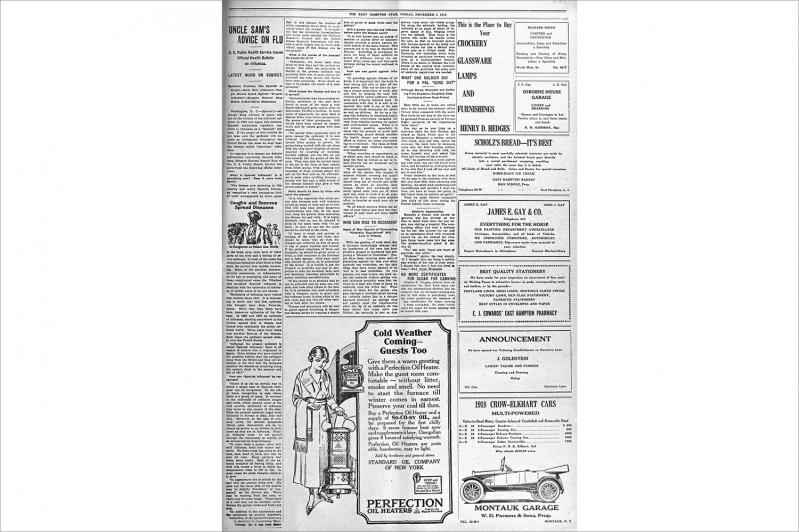While most of us have never experienced anything like the Covid-19 pandemic, the parallels with the 1918 influenza pandemic are significant. As with the coronavirus, the 1918 crisis involved a global virus complicated by the increasingly international nature of industrialization, with political frictions coloring messaging.
Much of the same advice given then is emphasized today to prevent the spread of Covid-19. On Nov. 1, 1918, The East Hampton Star ran an article titled “Uncle Sam’s Advice on Flu,” seen here. Concepts like isolation and instructions to “guard against droplet infection” appear in the 1918 advice as well as today. The guidance remains similar — isolation, protective equipment for nurses — as do warnings about the presence of the virus in sputum and mucus.
The article focused on calming people, noting that “in most cases, the symptoms disappear after three or four days, the patient then rapidly recovering. Some patients, however, develop pneumonia.” Certainly the longer incubation period for Covid-19 makes isolating those with the virus more complicated. In 1918, the government looked at the previous months of the outbreak for guidance, as we do now. And of course the media coverage of the pandemic today is constant and much more detailed.
Perhaps the most interesting part is that “Uncle Sam” objects to calling the virus a “Spanish” disease. Instead, “Yellow Peril” fears of the day are advanced, suggesting that “the epidemic came from the Orient.” Tellingly, the column repeats speculation that the epidemic may have originated in Germany, an enemy the Americans had joined the allied nations in fighting during World War I, which was winding down at the time. In the same discussion of the origins of the virus, Uncle Sam identifies the first known American epidemic as influenza in 1647.
The 1918 flu continued to flare up over the course of the next year, with a return making the front page of The Star in March of 1919.
Andrea Meyer, a librarian and archivist, is the head of the East Hampton Library’s Long Island Collection, the staff of which is working remotely but is available to answer inquiries or field “Item of the Week” suggestions via email to [email protected]. The library website’s “Long Island History” tab features Digital Long Island, a searchable database that is part of the New York Heritage Digital Collections.




